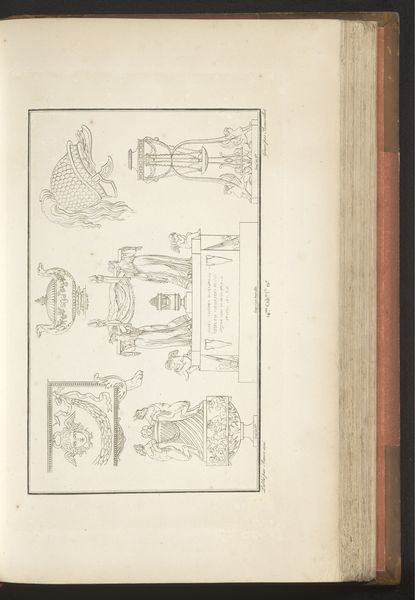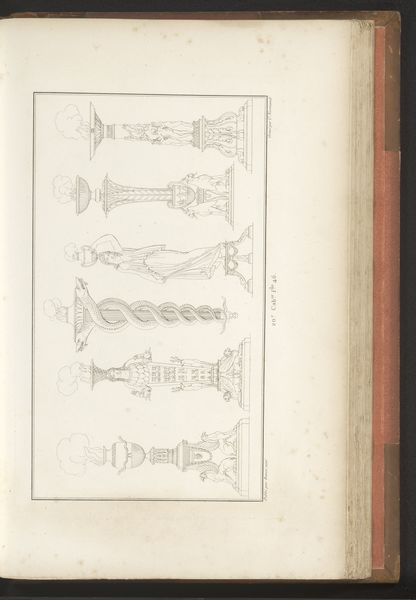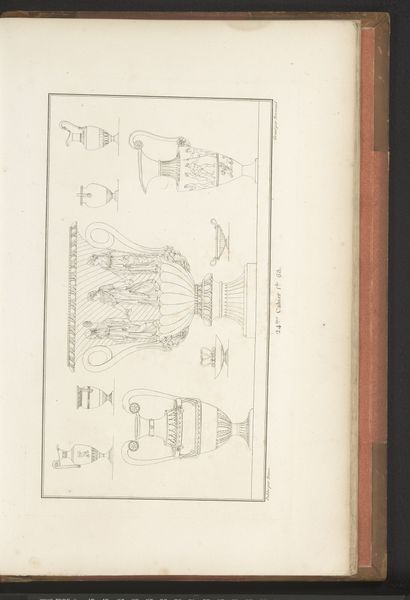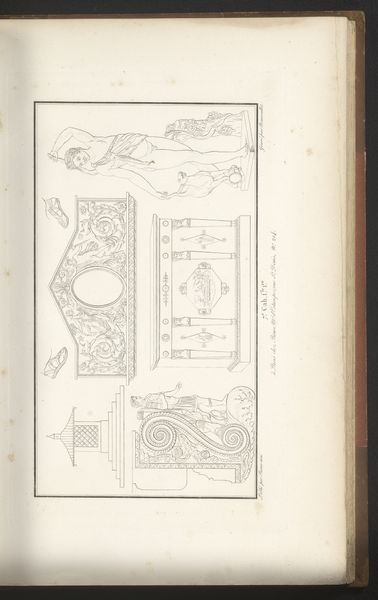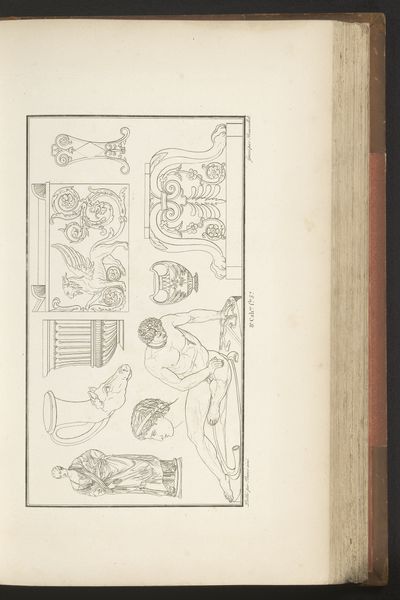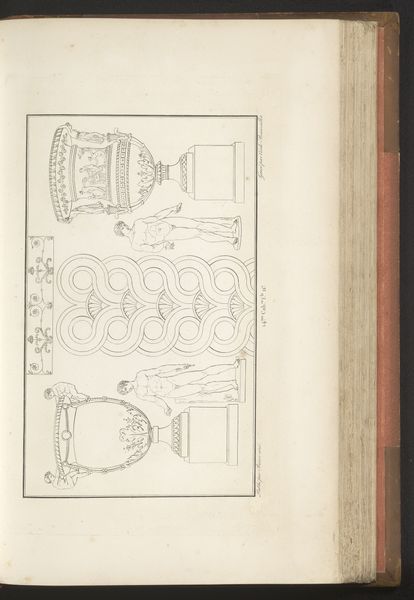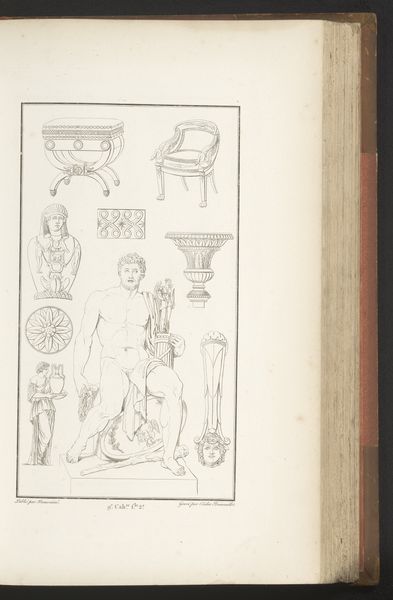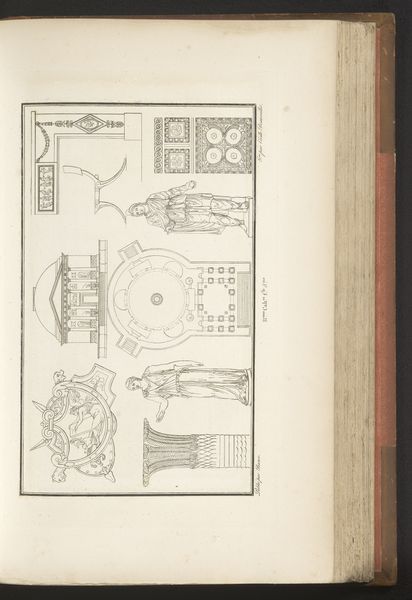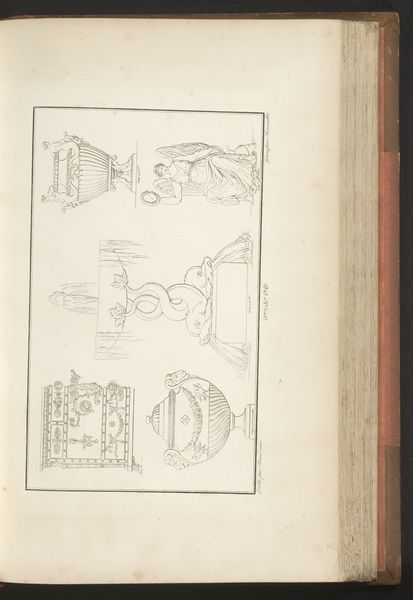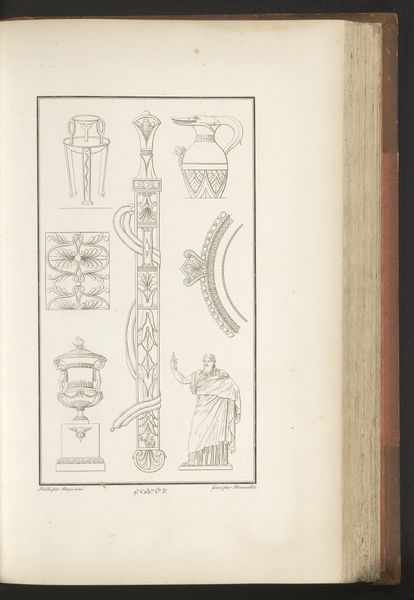
drawing, paper, ink
#
portrait
#
drawing
#
neoclacissism
#
classical-realism
#
figuration
#
paper
#
ink
#
ancient-mediterranean
#
academic-art
#
decorative-art
Dimensions: height mm, width mm
Copyright: Rijks Museum: Open Domain
Curator: Here we have "Diverse ornamenten," a drawing created around 1820 by Pierre-Nicolas Beauvallet, rendered in ink on paper. Its a study of various classical motifs. Editor: Oh, wow, my first thought is just how light and airy it feels. Like these figures and forms are floating, almost as if dreaming of ancient times rather than rigidly documenting them. Curator: Precisely! Beauvallet was working in the Neoclassical style, but his interest in ancient forms was also driven by his role within academic art circles. Drawings such as these were tools for disseminating visual vocabulary to students. Notice the attention to detail in the drapery and the architectural elements. Editor: Right, it’s an encyclopedia of design! And, I love how the different scales play with perception. That reclining figure up top seems caught between ornament and something… more, maybe yearning to be alive? Curator: Well, such figures certainly conveyed values and ideas important in early 19th-century French culture: order, reason, and the glories of antiquity, often intertwined with the aims of the state. There was a keen interest in adapting and mastering historical precedent to further the era’s aesthetic agenda. Editor: So, like, a visual power grab through beauty? No surprise there! I find myself drawn to the… tent-like structure in the middle. The texture he achieves with just ink is remarkable. It's like marbleized fabric, capturing a real sense of weight and form. Curator: Indeed. Beauvallet showcases his mastery of line and shadow. The cross-hatching and stippling create depth, alluding to three-dimensionality on a flat surface. Also, this precise methodology reflects broader developments in the publishing and dissemination of architectural and design patterns during this period. Editor: I see how it fed into the period’s style. Makes me wonder what designers made of it back then – inspiration, constraint or just plain copying? Now that I’ve spent some time with it, the floating feeling gives way to something more serious and rigid. Curator: That's a great insight into the piece’s reception, particularly among the professional art world that was growing at the time. What begins as light, accessible study becomes something closer to a manual in your mind. Editor: Thanks! It makes you see both the art and also understand that such a study is a bridge between the old world and emerging new artistic and aesthetic realities.
Comments
No comments
Be the first to comment and join the conversation on the ultimate creative platform.

